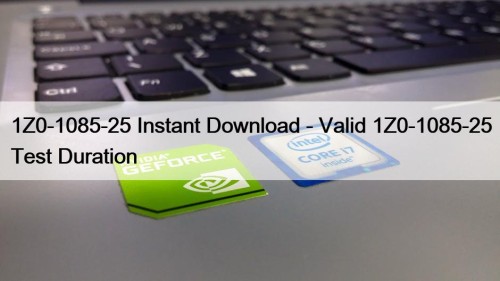Most Popular
 1Z0-1085-25 Instant Download - Valid 1Z0-1085-25 Test Duration
1Z0-1085-25 Instant Download - Valid 1Z0-1085-25 Test Duration
Lead2PassExam makes your investment 100% secure when you purchase 1Z0-1085-25 ...
 Quiz 2025 CSI Latest Free CSC2 Exam Dumps
Quiz 2025 CSI Latest Free CSC2 Exam Dumps
Our product boosts three versions which include PDF version, PC ...
 New AZ-204 Exam Notes, Related AZ-204 Certifications
New AZ-204 Exam Notes, Related AZ-204 Certifications
What's more, part of that Prep4sureExam AZ-204 dumps now are ...



2025 100% Free CNSP–The Best 100% Free Certification Book Torrent | CNSP Exam Actual Tests

The world today is in an era dominated by knowledge. Knowledge is the most precious asset of a person. If you feel exam is a headache, don't worry. CNSP test answers can help you change this. CNSP study material is in the form of questions and answers like the real exam that help you to master knowledge in the process of practicing and help you to get rid of those drowsy descriptions in the textbook. However, students often purchase materials from the Internet, who always encounters a problem that they have to waste several days of time on transportation, especially for those students who live in remote areas. But with CNSP Exam Materials, there is no way for you to waste time. The sooner you download and use CNSP study braindumps, the sooner you get the certificate.
Our company is trying to satisfy every customer’s demand. Of course, we also attach great importance on the quality of our CNSP real test. Every product will undergo a strict inspection process. In addition, there will have random check among different kinds of CNSP Study Materials. The quality of our CNSP exam quiz deserves your trust. Most of our customers are willing to introduce their friends to purchase our CNSP learning dumps.
>> CNSP Certification Book Torrent <<
CNSP PDF Dumps Format Desktop Practice Test Software
Our company has realized that a really good product is not only reflected on the high quality but also the consideration service. So we not only provide all people with the CNSP test training materials with high quality, but also we are willing to offer the fine service system for the customers, these guarantee the customers can get. If you decide to buy the CNSP learn prep from our company, we are glad to answer your all questions about the CNSP study materials. We believe that you will make the better choice for yourself by our consideration service on the CNSP exam questions.
The SecOps Group Certified Network Security Practitioner Sample Questions (Q37-Q42):
NEW QUESTION # 37
What types of attacks are phishing, spear phishing, vishing, scareware, and watering hole?
- A. Probes
- B. Ransomware
- C. Insider threats
- D. Social engineering
Answer: D
Explanation:
Social engineering exploits human psychology to manipulate individuals into divulging sensitive information, granting access, or performing actions that compromise security. Unlike technical exploits, it targets the "human factor," often bypassing technical defenses. The listed attacks fit this category:
Phishing: Mass, untargeted emails (e.g., fake bank alerts) trick users into entering credentials on spoofed sites. Uses tactics like urgency or trust (e.g., typosquatting domains).
Spear Phishing: Targeted phishing against specific individuals/organizations (e.g., CEO fraud), leveraging reconnaissance (e.g., LinkedIn data) for credibility.
Vishing (Voice Phishing): Phone-based attacks (e.g., fake tech support calls) extract info via verbal manipulation. Often spoofs caller ID.
Scareware: Fake alerts (e.g., "Your PC is infected!" pop-ups) scare users into installing malware or paying for bogus fixes. Exploits fear and urgency.
Watering Hole: Compromises trusted websites frequented by a target group (e.g., industry forums), infecting visitors via drive-by downloads. Relies on habitual trust.
Technical Details:
Delivery: Email (phishing), VoIP (vishing), web (watering hole/scareware).
Payloads: Credential theft, malware (e.g., trojans), or financial fraud.
Mitigation: User training, email filters (e.g., DMARC), endpoint protection.
Security Implications: Social engineering accounts for ~90% of breaches (e.g., Verizon DBIR 2023), as it exploits unpatchable human error. CNSP likely emphasizes awareness (e.g., phishing simulations) and layered defenses (e.g., MFA).
Why other options are incorrect:
A . Probes: Reconnaissance techniques (e.g., port scanning) to identify vulnerabilities, not manipulation-based like these attacks.
B . Insider threats: Malicious actions by authorized users (e.g., data theft by employees), not external human-targeting tactics.
D . Ransomware: A malware type (e.g., WannaCry) that encrypts data for ransom, not a manipulation method-though phishing often delivers it.
Real-World Context: The 2016 DNC hack used spear phishing to steal credentials, showing social engineering's potency.
NEW QUESTION # 38
The Management Information Base (MIB) is a collection of object groups that is managed by which service?
- A. TACACS
- B. SNMP
- C. SMTP
- D. NTP
Answer: B
Explanation:
The Management Information Base (MIB) is a structured database defining manageable objects (e.g., CPU usage, interface status) in a network device. It's part of the SNMP (Simple Network Management Protocol) framework, per RFC 1157, used for monitoring and managing network devices (e.g., routers, switches).
SNMP Mechanics:
MIB Structure: Hierarchical, with Object Identifiers (OIDs) like 1.3.6.1.2.1.1.1.0 (sysDescr).
Ports: UDP 161 (agent), 162 (traps).
Operation: Agents expose MIB data; managers (e.g., Nagios) query it via GET/SET commands.
MIB files (e.g., IF-MIB, HOST-RESOURCES-MIB) are vendor-specific or standardized, parsed by SNMP tools (e.g., snmpwalk). CNSP likely covers SNMP for network monitoring and securing it against enumeration (e.g., weak community strings like "public").
Why other options are incorrect:
A . SMTP (Simple Mail Transfer Protocol): Email delivery (TCP 25), unrelated to MIB or device management.
C . NTP (Network Time Protocol): Time synchronization (UDP 123), not MIB-related.
D . TACACS (Terminal Access Controller Access-Control System): Authentication/authorization (TCP 49), not MIB management.
Real-World Context: SNMP misconfiguration led to the 2018 Cisco switch exploits via exposed MIB data.
NEW QUESTION # 39
What will be the subnet mask for 192.168.0.1/18?
- A. 255.255.255.0
- B. 255.255.192.0
- C. 255.225.225.0
- D. 255.225.192.0
Answer: B
Explanation:
An IP address with a /18 prefix (CIDR notation) indicates 18 network bits in the subnet mask, leaving 14 host bits (32 total bits - 18). For IPv4 (e.g., 192.168.0.1):
Binary Mask: First 18 bits are 1s, rest 0s.
1st octet: 11111111 (255)
2nd octet: 11111111 (255)
3rd octet: 11000000 (192)
4th octet: 00000000 (0)
Decimal: 255.255.192.0
Calculation:
Bits: /18 = 2
Tags: CNSP Certification Book Torrent, CNSP Exam Actual Tests, Interactive CNSP Course, CNSP Valid Test Preparation, Well CNSP Prep